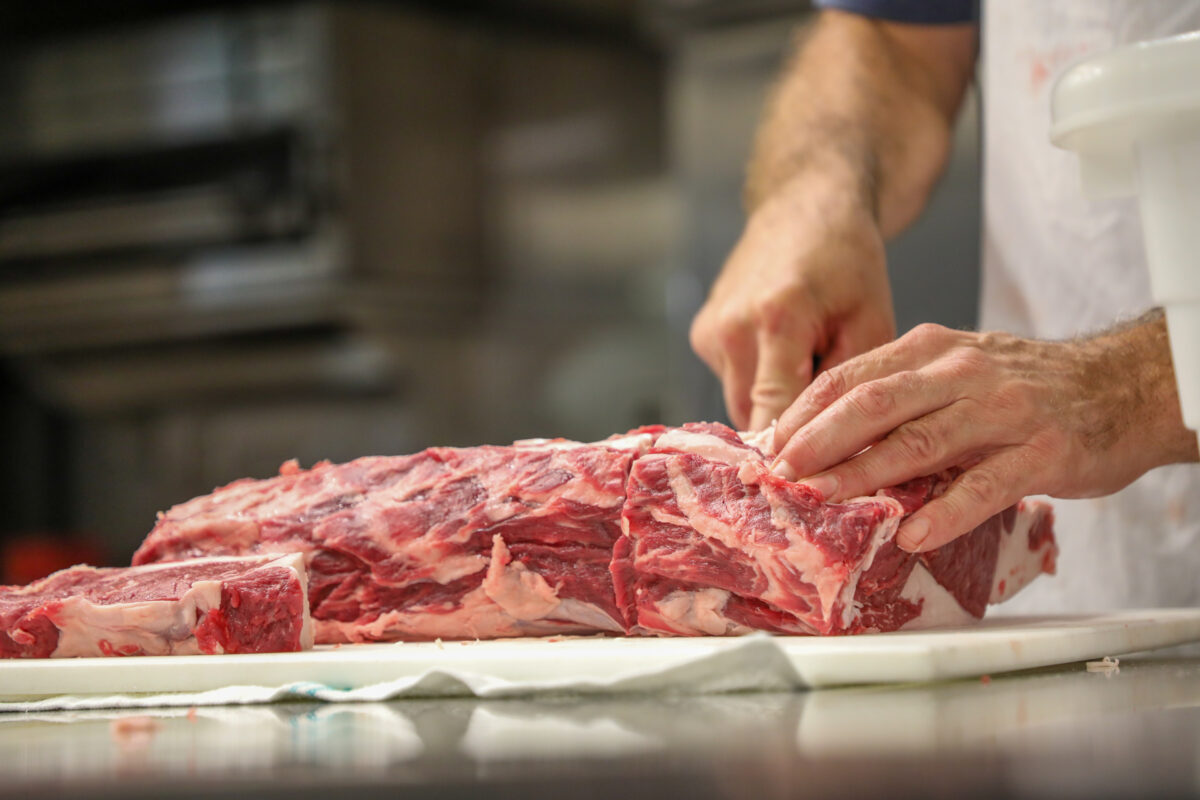Celebrating National Meat Week
Dawn Smith-Pfeifer

photo credit: Right Eye Digital, Used with Permission
I must have missed the memo. In celebration of #NationalMeatWeek (Jan. 28 – Feb. 4), I’m pleased to share a few facts about beef and pork, below.
Beef and pork have been staples in human diets for centuries, gracing our tables in various forms and flavors. While many of us are familiar with the basics of these meats, there are some fascinating and lesser-known facts that add an extra layer of intrigue to our favorite dishes. How many of these facts did you know?
What is Wagyu?
When it comes to beef, Wagyu is in a league of its own. According to the American Wagyu Association, Wagyu were originally draft animals used in agriculture and were selected for their physical endurance. This selection favored animals with more intra-muscular fat cells, what we call “marbling.” It’s the marbling that gives Wagyu beef its tenderness and flavor.
Pigs, in space?
Well, not literally. But both beef and pork have ventured beyond our planet. Astronauts aboard the International Space Station have enjoyed beef and pork dishes, specially prepared and packaged to withstand the challenges of space travel.
Beef and pork have been staples in human diets for centuries, gracing our tables in various forms and flavors.
Why is pork the other white meat?
We’ve all heard the slogan “Pork: The Other White Meat,” but do you know why pork is classified as such? Unlike red meats such as beef, pork is leaner and has a lighter color due to lower levels of myoglobin, a protein responsible for the meat’s red hue. At the time, chicken was all the rage and the campaign was designed to position pork as a “healthy” alternative to beef. Interestingly enough, studies have shown that beef is a great source of 10 essential vitamins and minerals.
What’s the ZIP in beef?
ZIP stands for zinc, iron and protein. A three-ounce serving of beef, which is about the size of a deck of cards, supplies 53% of our recommended daily intake of zinc, 14% of our daily iron needs and 51% of our protein needs. That's a lot of ZIP!
Why are pigs associated with saving?
Ever wonder why saving money is often associated with piggy banks? The connection between pigs and saving dates back to the Middle Ages when European potters crafted clay containers shaped like pigs to store money. The idea was that the pig, a symbol of abundance and good luck, would help the owners accumulate wealth over time.
What do you get when you mix beef and pork?
America’s favorite pizza topping – pepperoni – is beef, pork and spices like paprika, all rolled into one tasty ingredient.
So…there you have it. Beef and pork, with their rich histories and diverse culinary applications, continue to captivate our taste buds and spark our curiosity. So, the next time you savor a perfectly cooked steak or indulge in a succulent pork dish, remember the hidden tales that make these meats not just food but fascinating chapters in the book of culinary wonders.
Oh and it all starts on a farm! ;)
Dawn Smith-Pfeifer is content and communications director at North Dakota Farm Bureau. This column was originally published by NDFB and is republished with permission.
